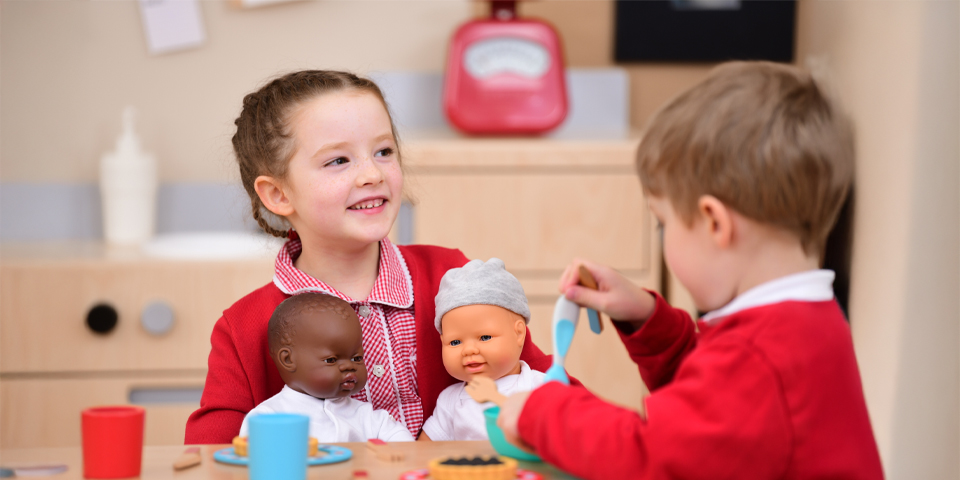If you’re aiming to find out more about Maria Montessori, then you’re in the right place. In this informative and inspiring blog, we explore the life, principles and legacy of Maria Montessori, one of the pioneers of early years education.
Who was Maria Montessori?
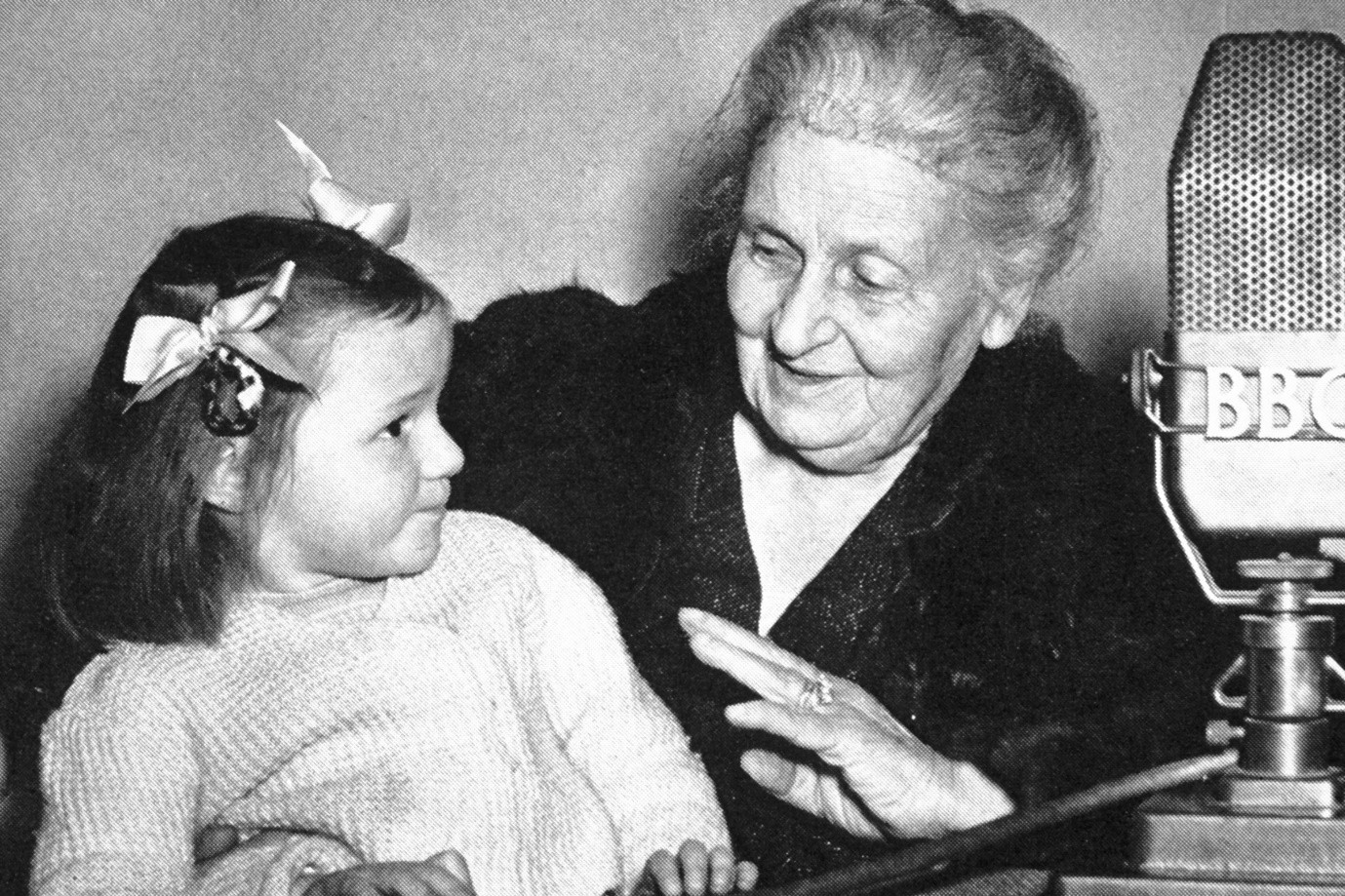
Maria Tecla Artemisia Montessori1 (Mon-tiss-or-ee) was an Italian physician and educator. She was born on 31st August 1870 in Chiaravalle, Marche, Italy and died on the 6th May 1952, aged 81, in Noordwijk in the Netherlands. Montessori is best known for her work on the philosophy of education and her writing on scientific pedagogy. Her work in education led to what has become known as the Montessori Method.
Montessori attended a public elementary school from the age of 6 but her early school record states that this time in her life was “not particularly noteworthy”. It was at secondary school from the age of 13 that Maria Montessori really began to flourish as a learner. Maria studied Italian, arithmetic, algebra, geometry, accounting, history, geography and sciences and, at the age of 16, continued her learning journey at a technical institute. At the age of 20, she decided to study medicine, something which was extremely rare, at the time, for women to do.
Having gained further qualifications in natural sciences including zoology, experimental physics, histology, anatomy and chemistry, Montessori enrolled in a medical programme at the University of Rome in 1893. Maria Montessori became an expert in paediatric medicine and spent many years working with and researching cognitive delay in young children. In 1906 Montessori was invited to oversee the care and education of a group of children within a new apartment building in Rome. It was in this setting that Montessori’s experiences formed the foundation for her educational method. In the decades that followed and up to the present day, the Montessori method has influenced childhood education practice across the world.
What is the Montessori Method?
Montessori’s methods2 were informed by her research and work with young children. She called for educational processes that would not just observe and measure young children’s learning but would transform them as learners. Working with young children at the Casa Dei Bambini in 1907, Montessori began to develop her own pedagogy. Her approach was based on observing children as they acted freely within a learning environment which had been prepared to meet their needs. This approach, with spontaneous activity within a learning environment, enabled Montessori to explore the roles of the educator and environment in young children’s education.
Montessori observed that the free exploration of the environment revealed an internal programme of development in the children. She saw this process as natural development and advocated that the role of the adult should be to remove obstacles to this process.
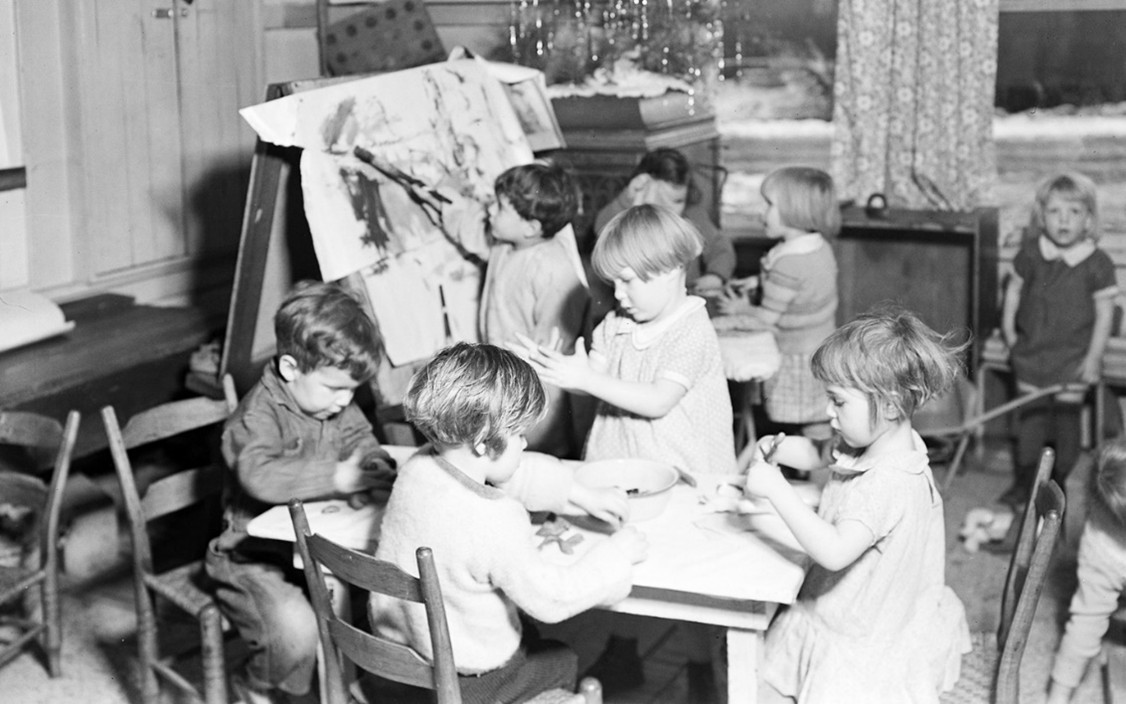
The Montessori Classroom
In line with the thinking of Maria Montessori, the school classroom was equipped with furniture which was child-sized. Practical life activities were planned which included cleaning, sweeping, wiping tables and tidying. The Montessori classroom also began to take shape with materials which were specifically chosen for their educational value stored on low accessible shelves for the children to use.
The Montessori Timetable
The early Montessori timetable was designed to include free choice of activities both inside and outside. It also included a range of other experiences including flower arranging, hand washing, gymnastics, care of pets, and cookery. The school day began at 9am and ended at 4pm and included time for cleaning, free games, time outside and work with clay. A typical winter’s day was outlined by Montessori in her writing:
- 9am–10am. Entrance. Greeting. Inspection as to personal cleanliness. Exercises of practical life; helping one another to take off and put on the aprons. Checking the room to see that everything is dusted and in order. Language: Conversation period: Children give an account of the events of the day before. Religious exercises.
- 10am–11am. Intellectual exercises. Objective lessons interrupted by short rest periods. Nomenclature, Sense exercises.
- 11am–11:30am. Simple gymnastics. Ordinary movements done gracefully, normal position of the body, walking, marching in line, salutations, movements for attention, placing of objects gracefully.
- 11:30am – 12pm. Luncheon. Short prayer.
- 12pm – 1pm. Free games.
- 1pm – 2pm. Directed games, if possible, in the open air. During this period the older children in turn go through with the exercises of practical life, cleaning the room, dusting, putting the material in order. General inspection for cleanliness: Conversation.
- 2pm – 3pm. Manual work. Clay modelling, design, etc.
- 3pm – 4pm. Collective gymnastics and songs, if possible, in the open air. Exercises to develop forethought: Visiting, and caring for, the plants and animals.
Overtime, each setting will have developed their own timetable to reflect the needs of their children and communities, wherever they may be located in the world. However, each ensures that the day retains the core principles of the Montessori method, providing dedicated time for intellectual, physical and social activities.
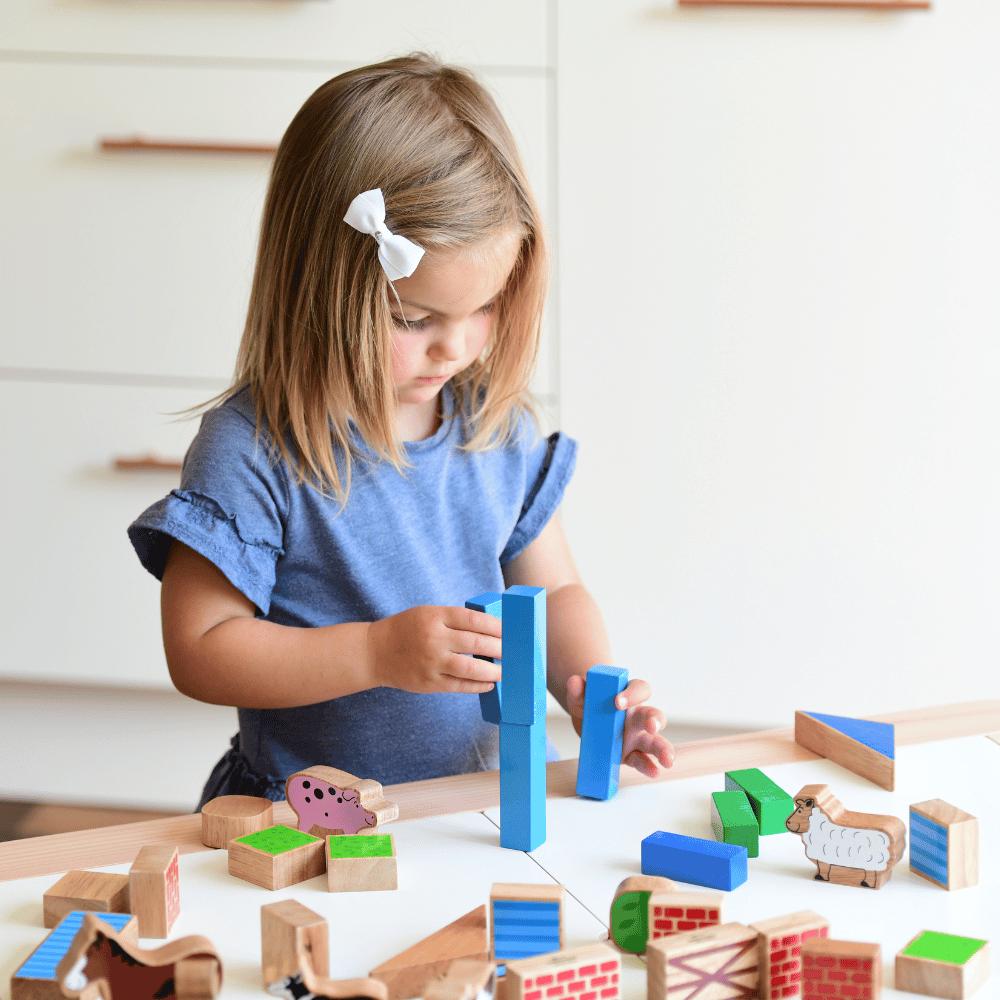
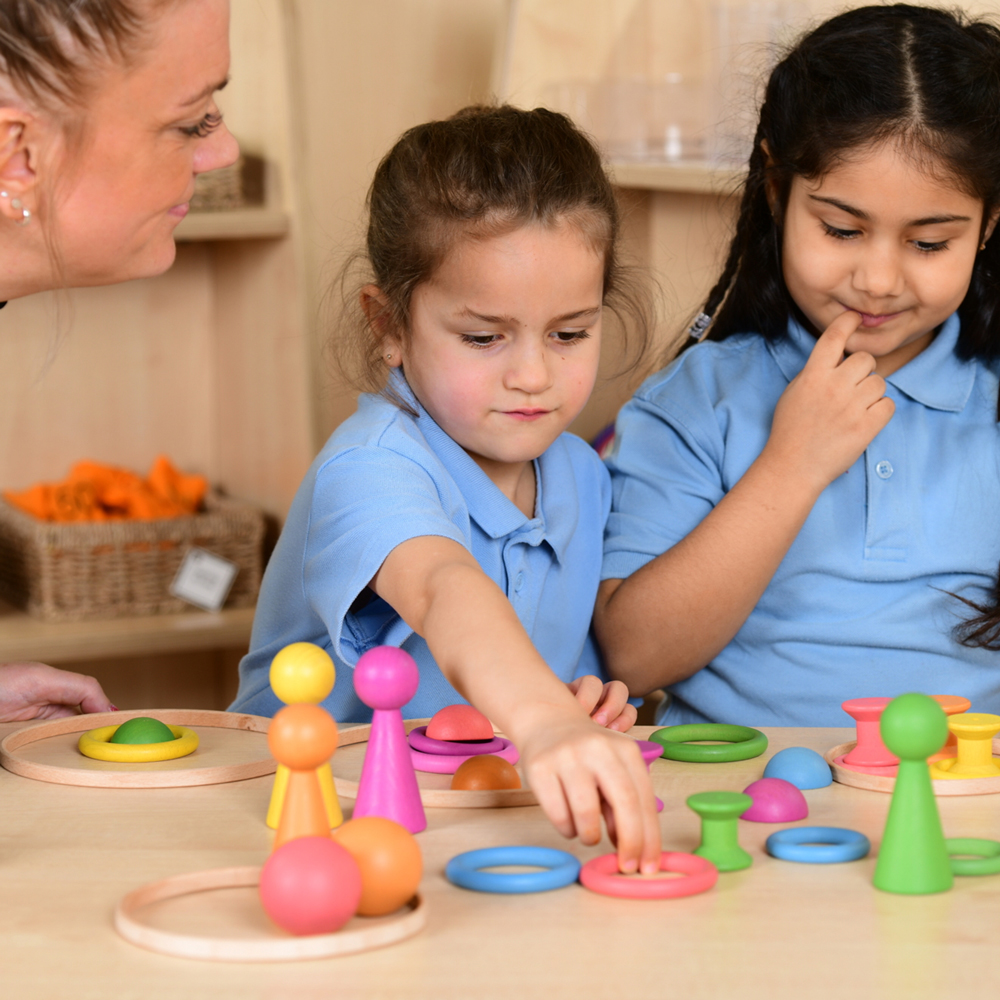
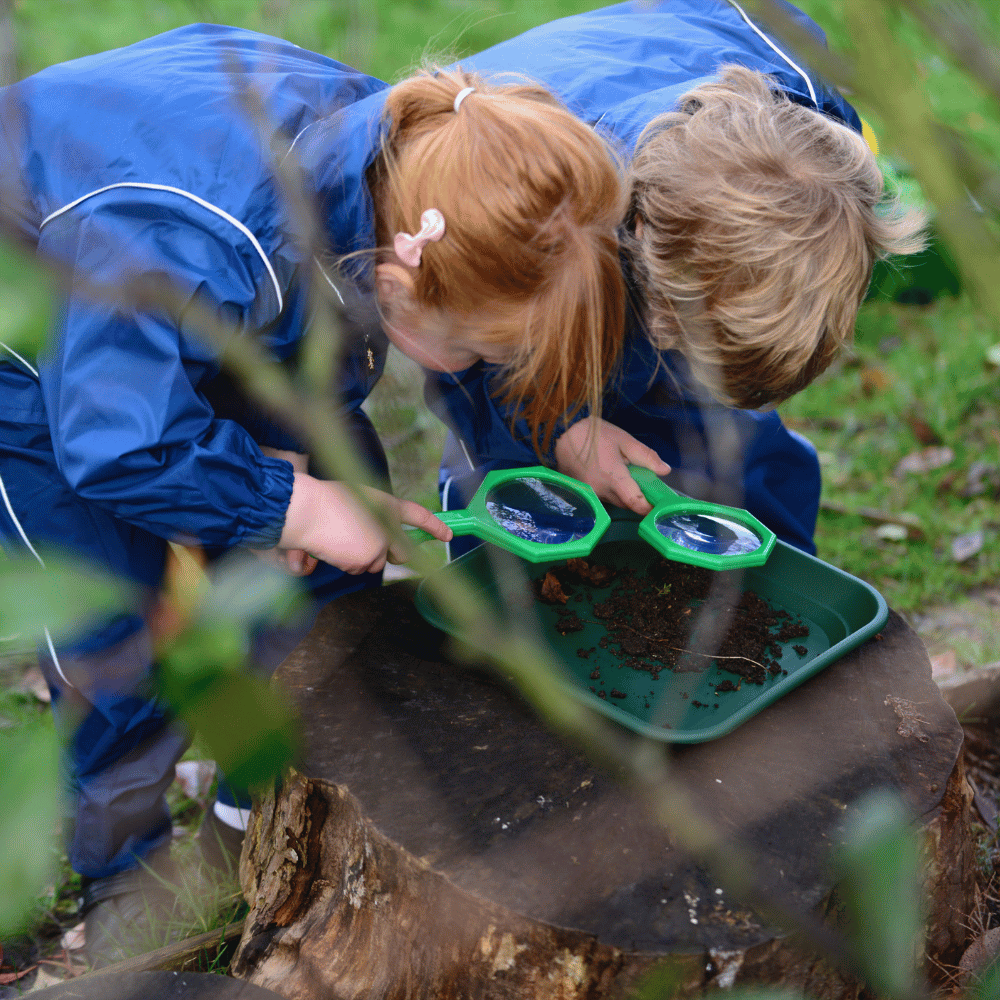
Resources within the Montessori Classroom
Maria Montessori designed and used a variety of materials and created a specific environment to facilitate hands-on, self-directed learning, including sensorial materials like wooden towers and sandpaper letters, practical life activities, and materials for language, mathematics, and cultural studies.
Here is a more detailed look at the specific types of resources that Maria Montessori used:
Sensory Materials:
- Pink Tower: Ten solid wood cubes that vary in size, teaching visual and tactile understanding of dimension.
- Brown Stair: A set of wooden blocks that gradually increase in length, aiding in understanding of linear dimensions.
- Knobbed Cylinders: Cylinders of varying sizes, used to develop fine motor skills and spatial awareness.
- Sandpaper Letters: Letters cut out of sandpaper, used to teach letter recognition and sounds.
- Moveable Alphabet: A set of wooden letters that children can manipulate to form words, promoting literacy skills.
- Metal Insets: Geometric shapes with metal outlines that children can insert into corresponding holes, developing fine motor skills and spatial reasoning.
Practical Life Activities:
These activities focus on everyday tasks, such as pouring, spooning, buttoning, and sweeping, to foster independence, concentration, and fine motor development.
Mathematics Materials:
- Number Rods: Coloured rods representing numbers 1-10, used to teach counting and number recognition.
- Golden Beads: Beads representing units, tens, hundreds, and thousands, used to teach place value and arithmetic operations.
- Bead Chains: Used to teach multiplication and other mathematical concepts.
Language Materials:
- Sandpaper Letters: As mentioned above, used to teach letter sounds and recognition.
- Moveable Alphabet: As mentioned above, used to create words and build vocabulary.
- Language Cards: Cards with pictures and corresponding words, used to expand vocabulary and reading skills.
Cultural Materials:
- Puzzle Map: Introduces children to the forms and names of continents, oceans, and hemispheres.
- Sandpaper Globe: A globe made of sandpaper, used to teach geography and map skills.
- Continent Globe: A globe with continents outlined, used to further explore geography.
- Nature Table: A table where natural objects, such as plants, rocks, and shells, are displayed for observation and exploration.
- Nature Walk: A guided walk in nature, where children observe plants, animals, and other natural phenomena.
- Plant Classified Cards: Cards that classify different types of plants and their parts.
- The Tree, The Leaf, The Flower, and The Seed: Activities that focus on different parts of a plant and their functions.
- Living and Non-living Things: Activities that explore the differences between living and non-living things.
- Importance of the Sun: Activities that explore the importance of the sun for life on earth.
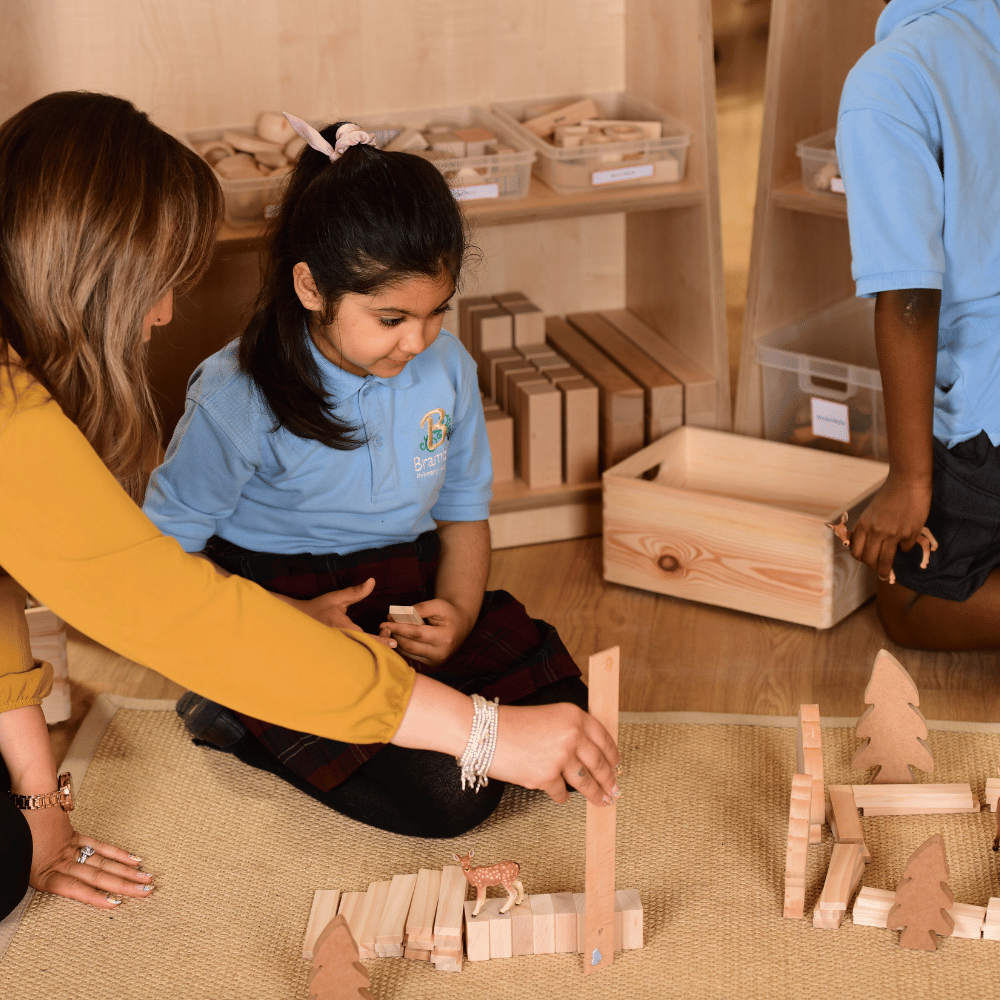
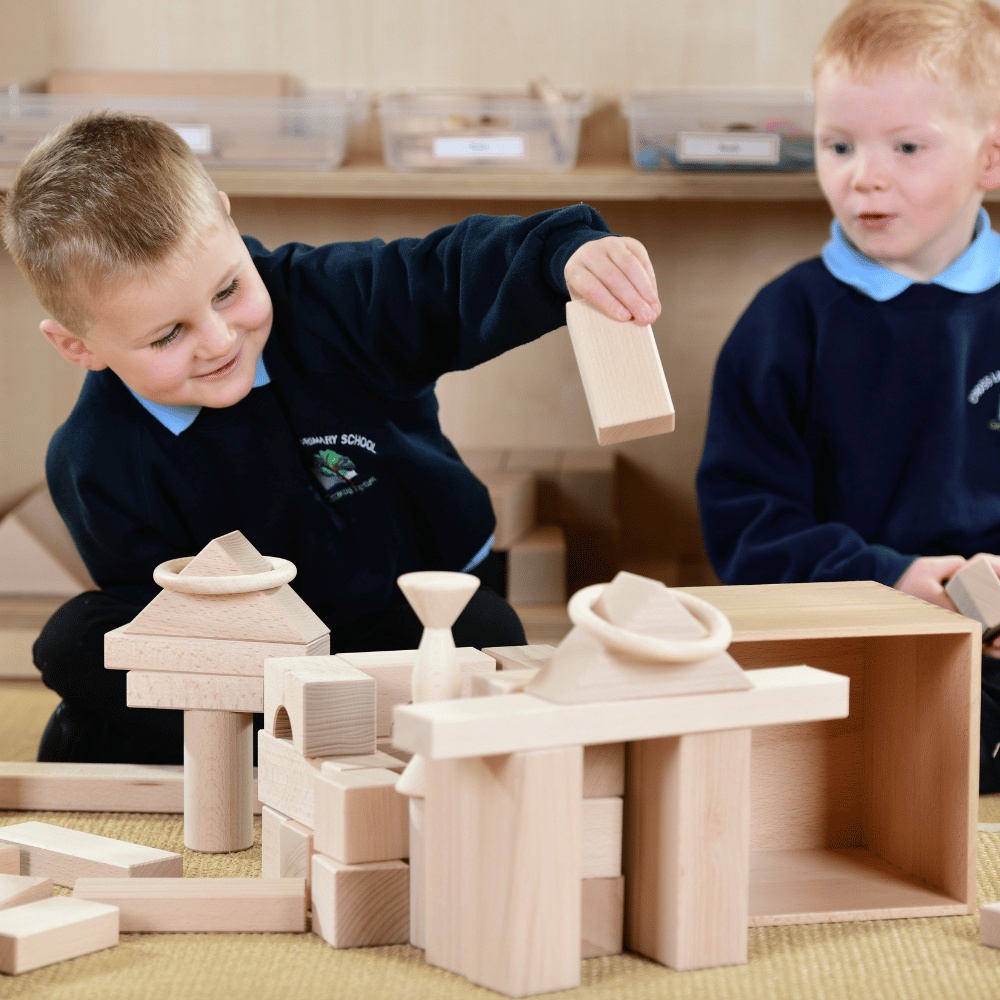

The Adult Role within the Montessori Method
The Montessori approach gives great value to developing the learning attributes of the children through independent choice and exploration. With this in mind, the role of the adult within the Montessori method is more varied and nuanced than practice solely focused on direct instruction.
The role of the adult within the Montessori method includes the effective planning of the learning environment to include materials and resources for the children to use independently. A key part of the adult role is in providing and organising appropriate furniture for the age ranges of the children. This includes a focus on storing resources effectively on furniture which is the correct height.
Alongside this focus on the environment, the Montessori method focuses on the adult as the guide, not the teacher. In this role, the adult observes the children’s interests and needs, offering support and guidance as and when these are needed by the children. This flexible approach, which builds on the needs and interests of the children, relies on adults who are sensitive to children’s needs and understand how children learn and develop. Within the Montessori Method, adults show respect for the children by giving them space and time and environment which enables them to express their ideas and follow their interests. Adults also value children’s individuality, autonomy and developmental stage, allowing them to make choices and learn at their own pace.
Other key features of the adult role include being:
- A facilitator of learning: creating an environment for the children to thrive, nurturing their learning through careful interaction, support and encouragement.
- A role model: being aware that children are influenced both positively and negatively by the role of the adult. Making conscious decisions as a role model includes modelling positive learning behaviours and building relationships.
- An observer of learning: building in time to observe children as they engage in a range of experiences, paying attention to children’s interactions, learning styles, and challenges, in order to support them more effectively.
- Teamwork: Montessori educators work as a team, collaborating to create a supportive and enriching learning environment.
The Impact of the Montessori Method on the Children
Maria Montessori observed that through her method children developed key learning attributes such as independence, autonomy and self-motivation.
“The greatest sign of success for a teacher… is to be able to say, ‘The children are now working as if I did not exist.’” Maria Montessori
Her method aimed to develop these attributes alongside the learning of new skills and concepts. Montessori also believed that the most effective approach was to acknowledge all children as individuals and that this would help each child to feel more valued and enable them to fulfil their potential. As Maria Montessori wrote:
“One test of the correctness of educational procedure is the happiness of the child.”
The Montessori Method for Different Age Ranges
Montessori wrote several books about her approach to education including The Montessori Method. In the text, Montessori recommends the use of special learning environments designed to meet the needs of students in three developmentally meaningful age ranges: 2-2.5 years, 2.5-6 years and 6-12 years. By following the Montessori method, teachers plan experiences which involve exploration, manipulations, order, repetition, abstraction and communication.
The Montessori method outlines the key types of experiences that should be available for children aged from two to six years. These experiences include opportunities to use of their senses to explore and manipulate objects within their immediate environment. For older children, over six years of age, Maria Montessori advocated the use of more abstract concepts and experiences to build on the children’s reasoning, imagination and creativity.
To find out more about how to support children in Key Stage One to learn in this way, read our Early Excellence blog: Continuous Provision in Key Stage One: Top Ten Tips for Getting Started.
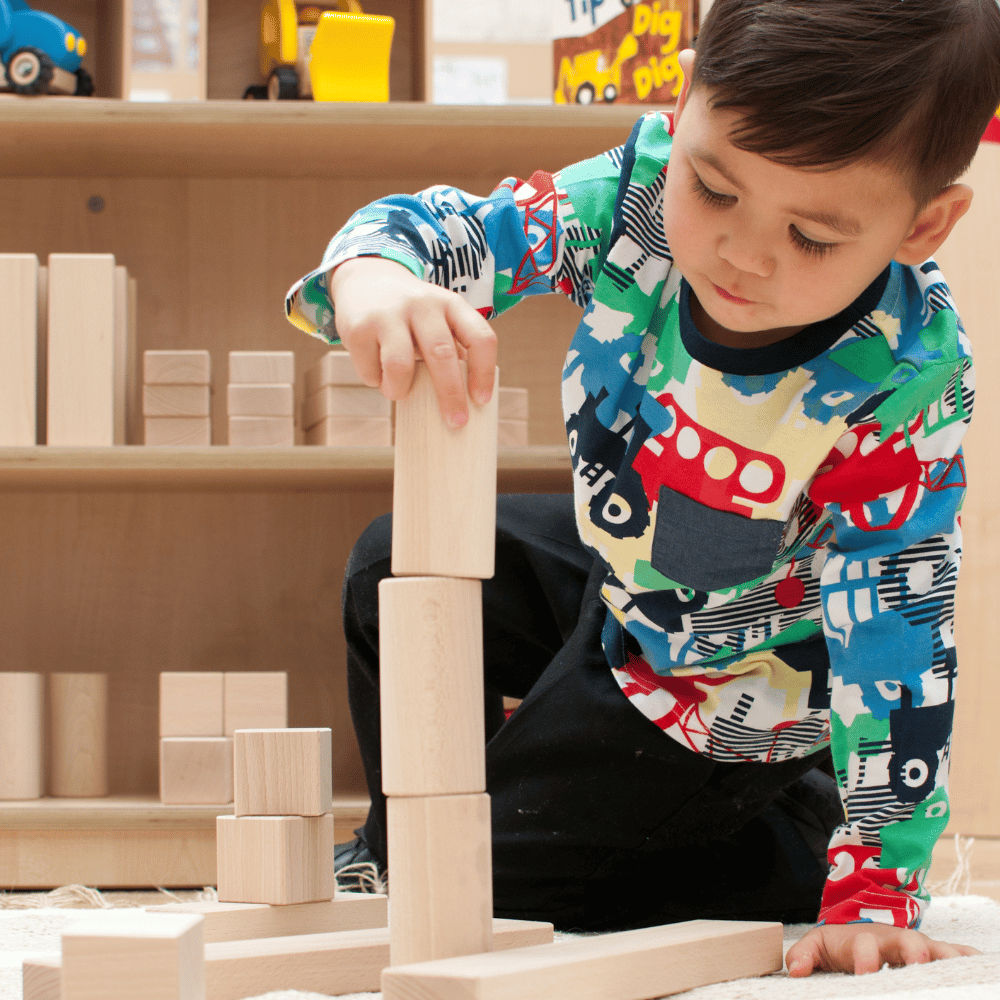
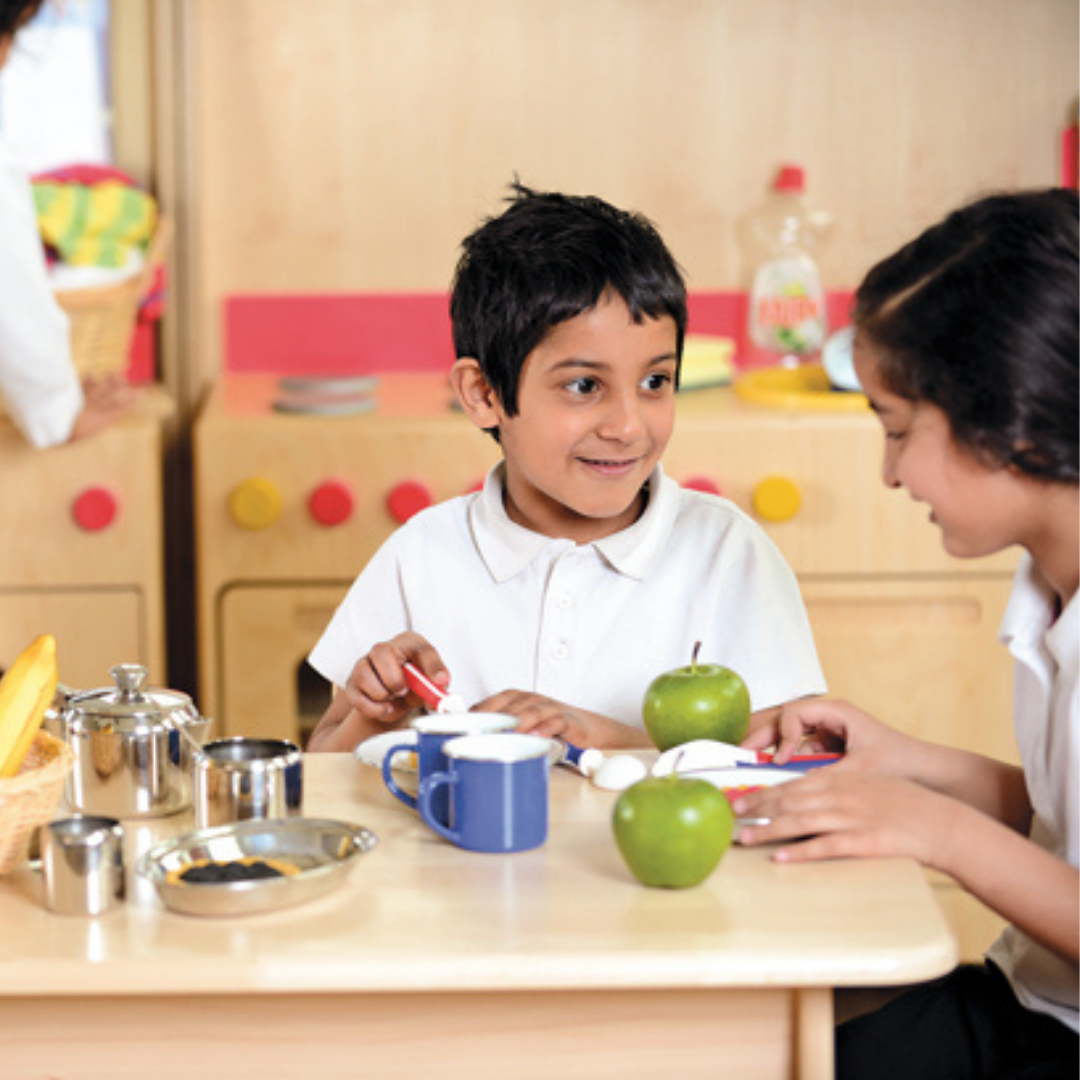
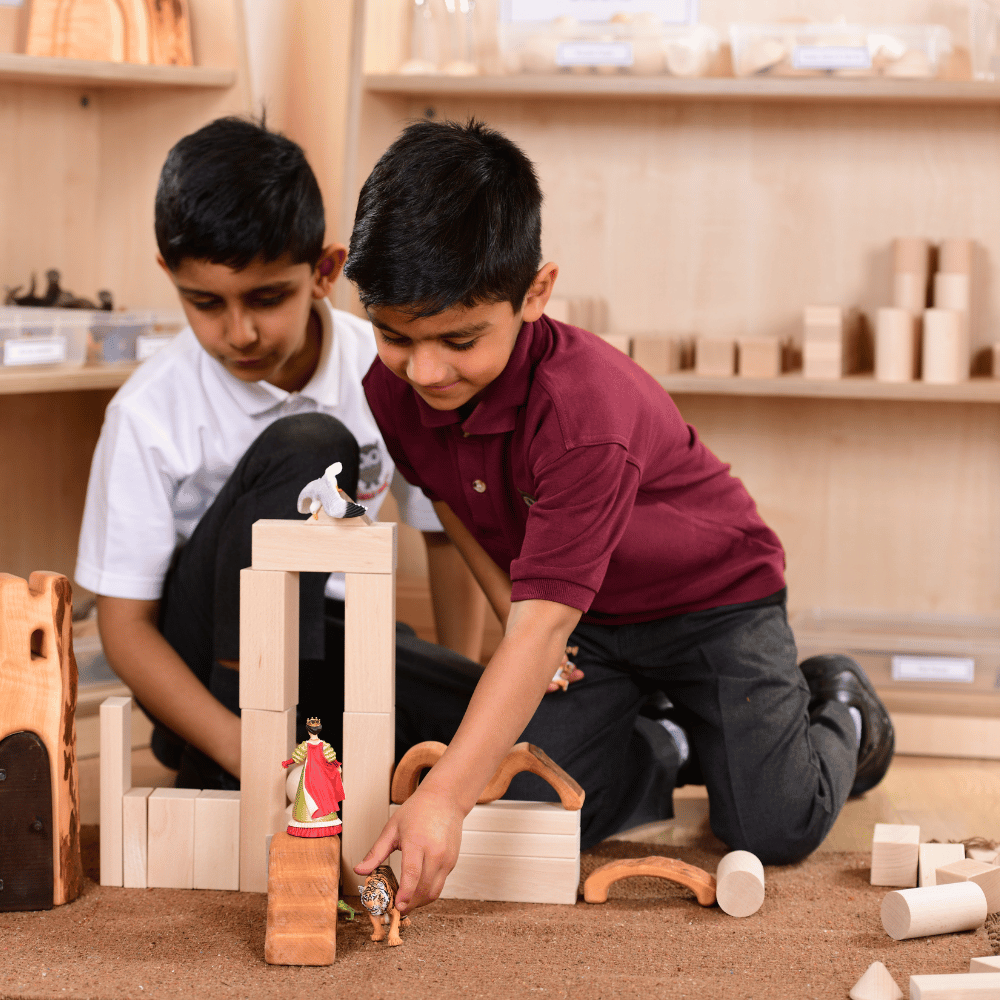
What Does Montessori Mean Today?
Montessori education is now a worldwide movement with numerous schools and programmes, including public and private settings, across various countries and continents. There are thought to be around 60,000 Montessori influenced school settings around the world including a large number in the United States.
Here’s a more detailed look at Montessori settings globally:
Global Presence:
- Extensive Reach: Montessori education is practiced in numerous countries, with estimates suggesting thousands of schools and programmes worldwide.
- Public and Private Settings: Montessori schools can be found in both public and private sectors, with some countries, like Thailand and the Netherlands, having public Montessori programmes.
- Examples of Countries with Montessori Schools: The United States, China, Thailand, Germany, Canada, Tanzania, and India are among the countries with a significant number of Montessori schools.
Montessori education emphasises the importance of community and social interaction, with children learning to work together and respect each other. Today, there are many different kinds of Montessori schools across the world with varying practice, but certain fundamental principles of the Montessori method have remained. Teachers in Montessori schools act as gentle guides, keeping adult interference to the bare minimum. Whilst some subjects such as mathematics and literacy may be taught in the same way as other settings, Montessori schools still often focus on hands on learning experiences, child-initiated learning and practical activities such as cooking and cleaning.
Miriam Ferro, the Headteacher at the Ecoscuola Montessori in Palermo, Sicily, takes pride in the school’s Montessori principles. “Our children learn to self-manage” she says as she explains the workings of the day. Their Montessori day involves real life practical tasks such as serving drinks to the other children in the class “and during breakfast and lunch they are also self-directed, taking it in turn to lay the table and serve their classmates”.
Montessori Schools in the UK
In the UK, Montessori settings and schools, which offer a child-led, hands-on approach to learning, are growing in popularity, with over 700 schools and nurseries across the country, ranging from small nurseries to larger primary schools.
Notable Montessori Attendees
Some famous and successful people who attended Montessori schools include Jeff Bezos (Amazon founder), Larry Page and Sergey Brin (Google founders), and Mark Zuckerberg (Facebook founder).
Here’s a more detailed list of famous Montessori alumni:
Business & Technology:
- Jeff Bezos (Founder of Amazon)
- Larry Page and Sergey Brin (Founders of Google)
- Mark Zuckerberg (Founder of Facebook)
- Bill Gates (Co-founder of Microsoft)
- Steve Jobs (Co-founder of Apple)
Entertainment:
- Taylor Swift (Singer)
- George Clooney (Actor)
- Beyonce Knowles (Singer)
- Stephen Curry (NBA player)
- Anthony Doerr (Author)
- Morgan Saylor (Actress)
- Melissa Gilbert (Actress)
- Sarah Gilbert (Actress)
- Kami Cotler (Actress)
Other Notable Figures:
- Peter Drucker (Inventor of Modern Management)
- Berry Brazelton (Noted Paediatrician and Author)
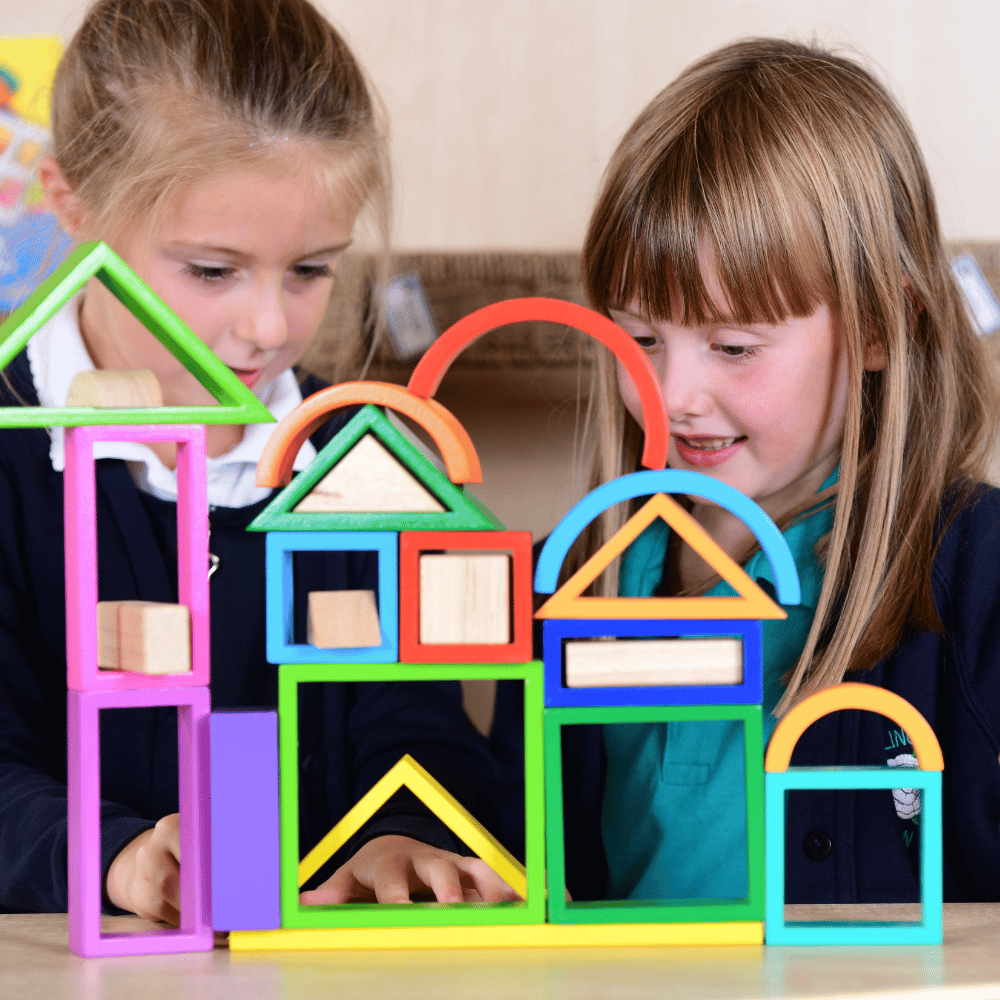
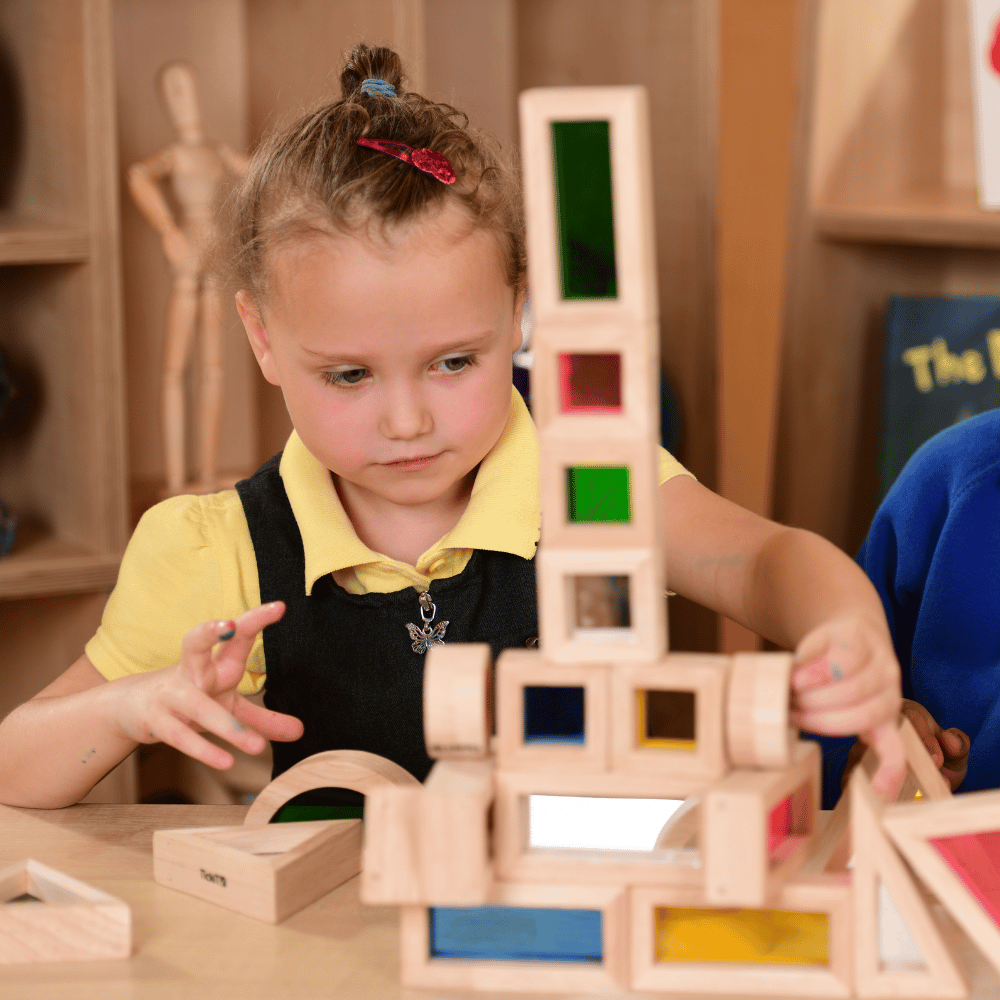
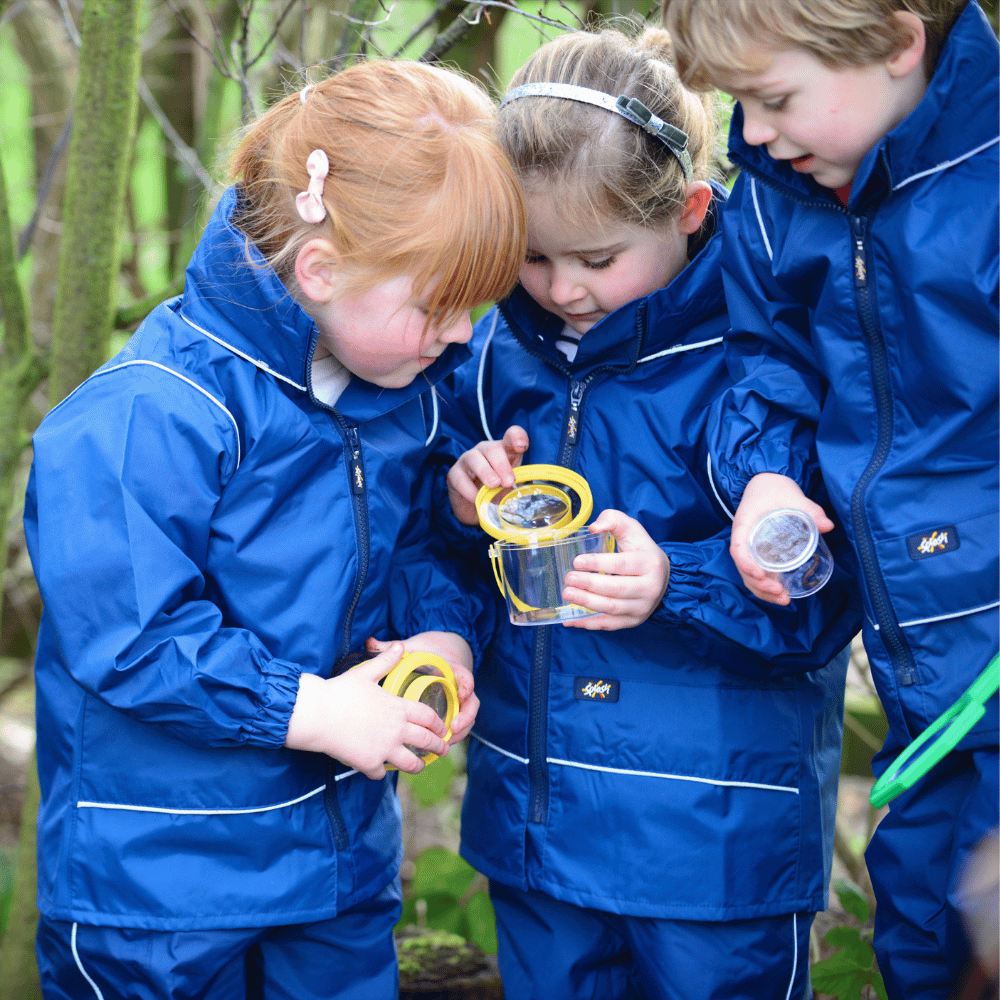
What are Montessori Toys and Resources?
As part of the Montessori approach, children are provided with a range of interesting materials to explore. These resources and materials are carefully chosen by the adults within a Montessori setting in order to provide high quality learning experiences. Historically called “Montessori Toys” we would now refer to these educational materials as Montessori resources.
Resources within a Montessori setting are often crafted from high-quality wood. These wooden resources are visually appealing and aesthetically pleasing to the children. They encourage manipulation and hands-on learning experiences. Within a Montessori setting, the wooden resources are also more durable than plastic alternatives, making them sustainable and environmentally friendly.
Examples of Montessori “Toys” and Resources:
Some of the most typical Montessori-inspired resources are:
- Wooden bricks: for children to build, stack, create towers and develop simple story settings for their play.
- Wooden arches: these resources are perfect for imaginative play and an exploration of shape and space.
- Stacking rainbow shapes: these simple stacking toys provide opportunities to develop mathematical concepts and are a great resource for adding to imaginative Small World settings.
- Shape sorters: these materials prompt mathematical exploration and language development.
- Wooden figures: these Small World figures can be combined with the wooden shapes and blocks to create simple imaginative settings.
- Abacuses: for children to engage in the exploration of number and counting.
- Sensory blocks: these provide rich opportunities for communication and language development, as well as the exploration of materials. Sensory blocks might be mirrored or have coloured Perspex for light and colour exploration.
- Resources for exploring nature: Maria Montessori spoke of the importance of spending time outdoors. Resources such as magnifying glasses, gardening tools and opportunities to explore digging all help children to connect with nature.
When selecting Montessori-inspired toys and resources, it is important to consider the learning needs of the children linked to their age and stage of development. For children aged from birth to three, Montessori toys and resources should be chosen which enable and encourage:
- transferring from hand to hand.
- grasping and manipulating.
- the exploration of cause and effect.
- the investigation of shapes and patterns.
- physical opportunities such as holding, carrying, rolling and stacking.
- schematic play such as filling, tipping, pouring, stacking, and transporting.
For three- to five-year-old children, Montessori toys and resources should be chosen to provide opportunities for:
- Early imaginative play based on their own experiences. Dolls, babies, small world figures etc.
- Developing early mathematical concepts such as number and shape. Peg boards and shape sorters work well for this.
- The exploration of how sounds are made and can be changed. Simple wooden musical instruments provide effective opportunities for this.
- Investigation of nature. Magnifying glasses and gardening tools provide excellent opportunities.
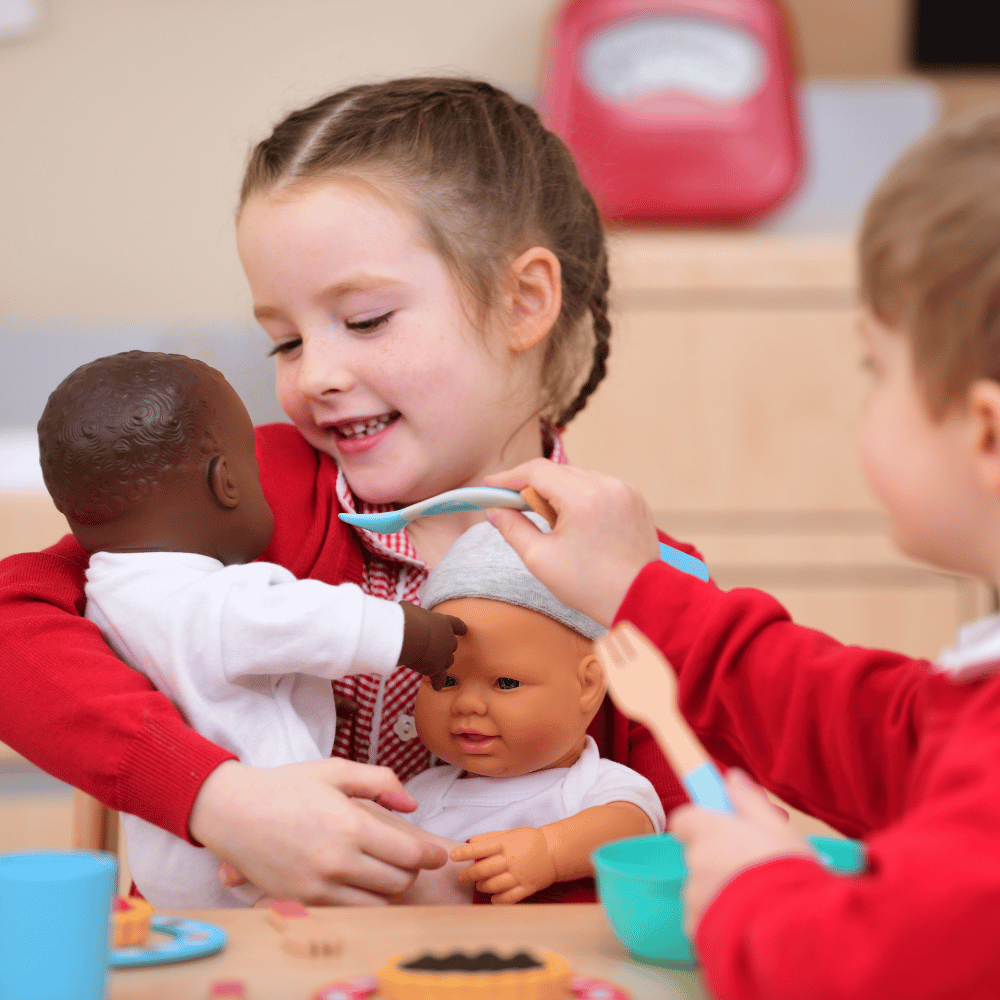
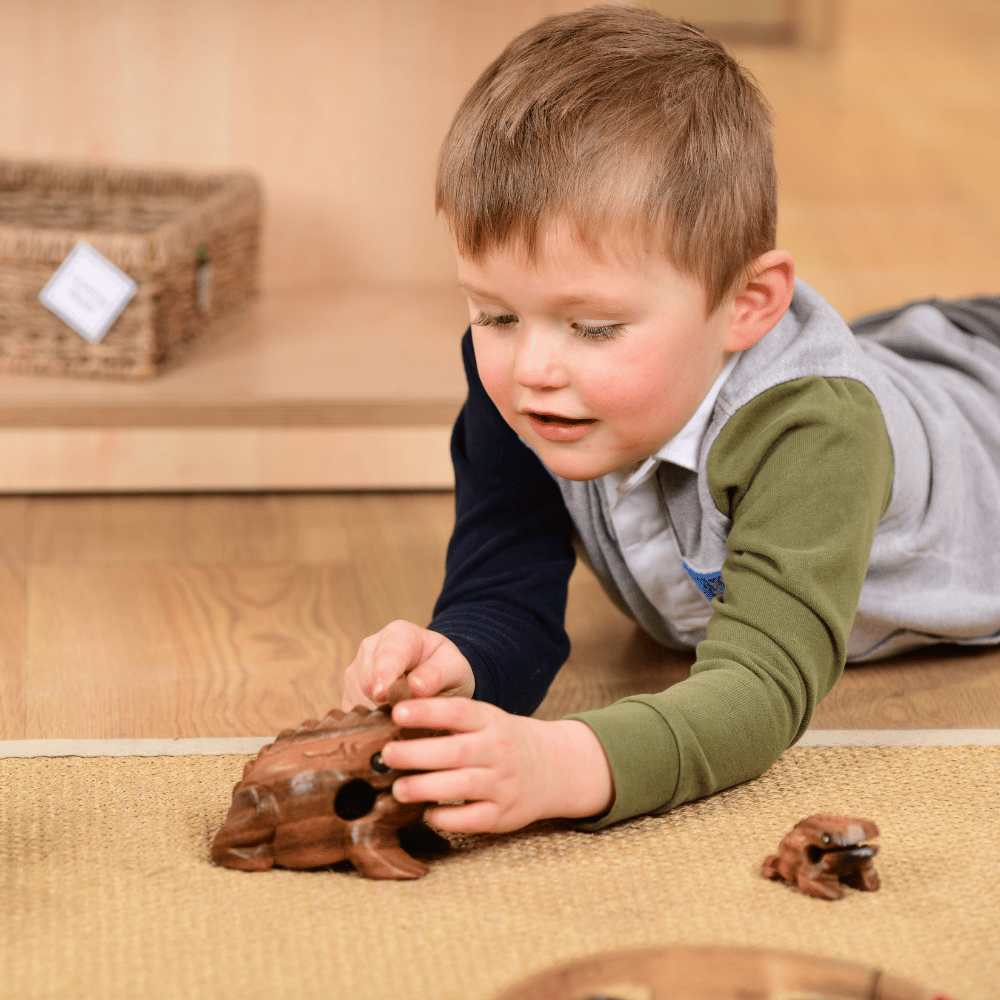
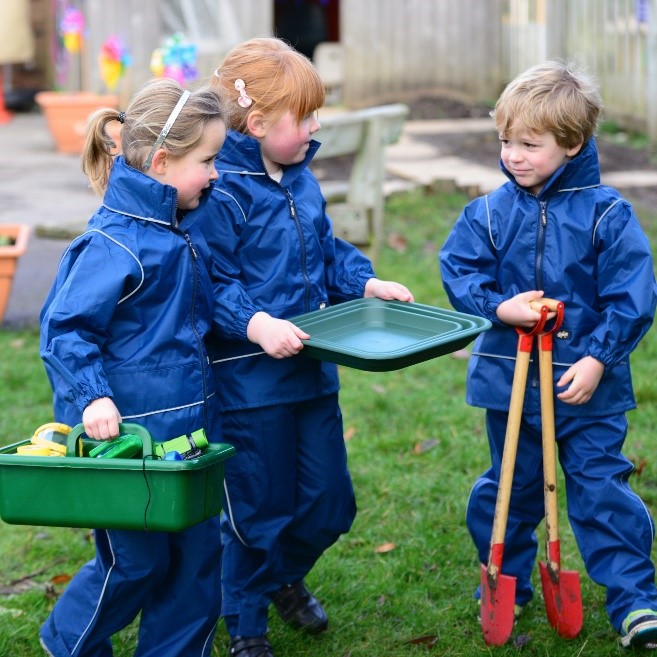
The Benefits of Montessori Education
There are many wide-ranging benefits of the Montessori method. These benefits include both what the children are learning and also the development of the characteristics of effective learning. These characteristics include the key attributes such as motivation, independence, thinking skills and resilience.
The benefits of the Montessori method also include the following:
Academic & Cognitive Development:
- Self-Paced Learning: Montessori classrooms allow children to work at their own pace, fostering a deeper understanding of concepts and building confidence.
- Hands-on Learning: The use of specialised materials encourages exploration and discovery, making learning engaging and memorable.
- Critical Thinking & Problem-Solving: The emphasis on exploration and experimentation helps children develop critical thinking and problem-solving skills.
- Enhanced Curiosity and a Love for Learning: Montessori education cultivates a genuine love for learning and exploration, fostering a lifelong pursuit of knowledge.
- Strong Foundation for Future Learning: Montessori education provides a strong foundation for future academic success, preparing children for higher education and beyond.
Social & Emotional Development:
- Independence and Self-Discipline: Children are encouraged to take initiative and responsibility for their learning, fostering independence and self-discipline.
- Social Skills: Multi-age classrooms promote social interaction and collaboration, helping children develop empathy, respect, and communication skills.
- Emotional Intelligence: The focus on self-regulation and emotional awareness helps children develop emotional intelligence and self-awareness.
- Respect for Others: The Montessori environment emphasises respect for oneself and others, fostering a sense of community and belonging.
- Strong Self-Esteem: The emphasis on individual needs and strengths helps children develop a strong sense of self-esteem and confidence.
Practical Life Skills:
- Nurturing Practical Life Skills: Montessori education incorporates practical life skills, such as self-care, cleaning, and cooking, which help children develop independence and responsibility.
- Developing Fine and Gross Motor Skills: Hands-on activities and materials help children develop both fine and gross motor skills.
- Leadership Skills: In Montessori environments, older children often model behaviours and share knowledge, instilling a sense of responsibility and leadership.
The Disadvantages of the Montessori Method
While the Montessori method offers many benefits, potential drawbacks include high costs for settings which may be passed on to parents. In addition to this, some have found the Montessori approach to be too unstructured with limited opportunities for group activities and social experiences.
Other potential disadvantages to a Montessori education may include:
Cost and Accessibility:
- High Tuition Fees: Montessori schools, especially those that are fully accredited, can be expensive, making them inaccessible to many families.
- Limited Availability: Montessori schools may not be readily available in all communities, particularly in low-income areas, further limiting access.
Curriculum and Structure for Older Children:
- Lack of Standardised Assessment: The Montessori method often lacks standardised testing and grading, which can be a concern for parents who prefer clear academic benchmarks and assessments.
- Less Structured Curriculum: The emphasis on self-directed learning and freedom of choice can be seen as a drawback by parents who prefer a more structured and traditional approach to education.
- Potential for Difficulty Transitioning to Traditional Schools: Children who have been in a Montessori environment may find it difficult to adapt to the more structured and teacher-led environments of traditional schools.
Social and Behavioural Considerations:
- Limited Opportunities for Group Activities: The Montessori approach often emphasises individual work and learning, which can limit opportunities for social interaction and collaboration.
- Potential for Difficulty with Authority and Collaboration: The focus on independence and self-directed learning may make it challenging for some children to work collaboratively and follow instructions in traditional settings.
- Not Suitable for All Children: The Montessori method may not be the best fit for all children, particularly those who are shy, struggling, or have specific needs that require more structured and individualised instruction.
- Potential for Misinterpretation: The principles of independence and self-directed learning can be misinterpreted or inconsistently applied, leading to confusion or dissatisfaction among students and parents.
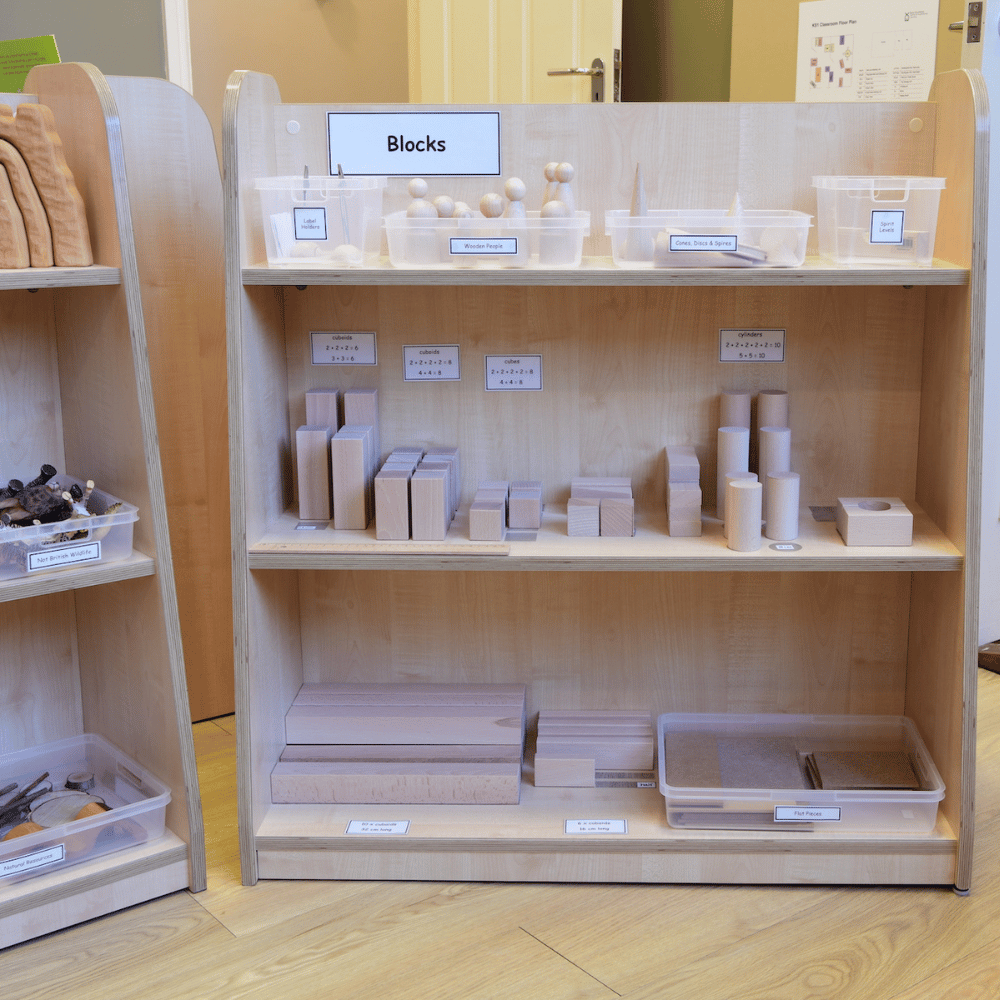

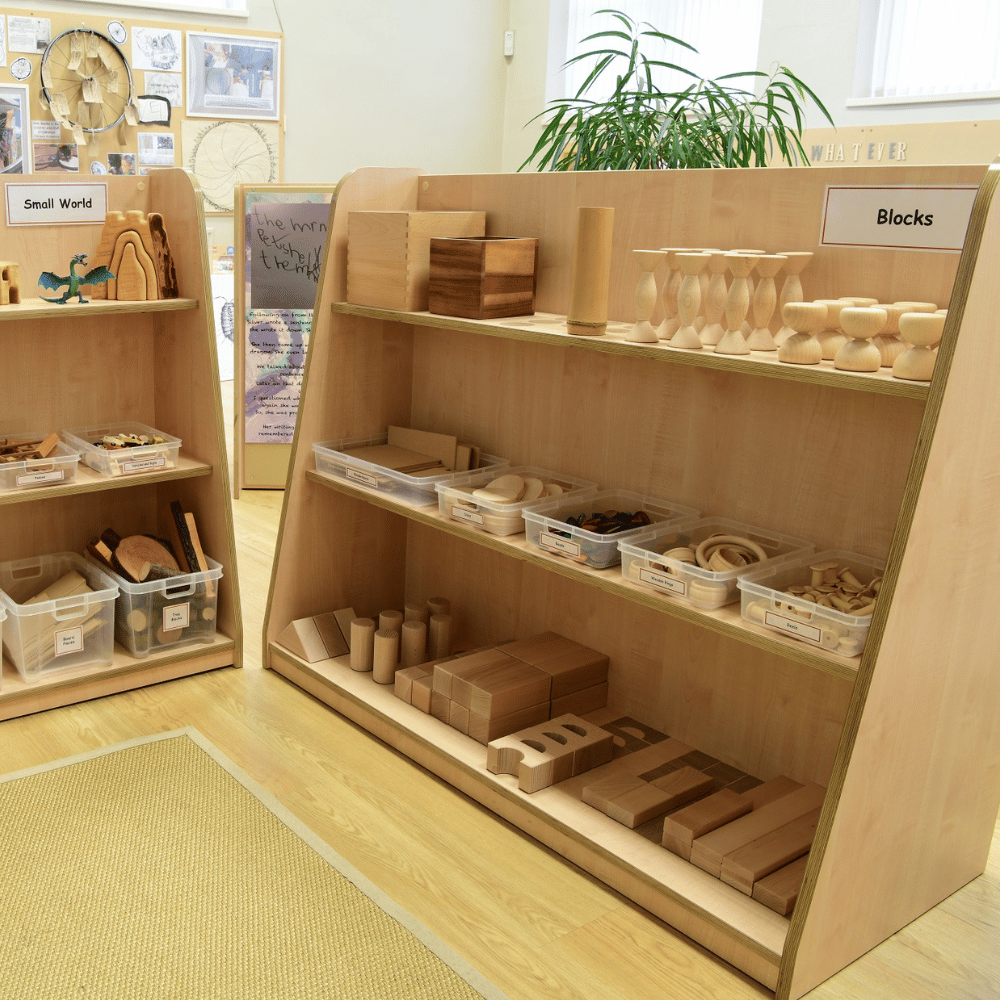
Maria Montessori: The Impact on Modern Education
Maria Montessori’s revolutionary educational philosophy, emphasising child-centred learning, self-directed exploration, and hands-on activities, continues to profoundly impact education today, inspiring the creation of Montessori schools and influencing contemporary educational reforms globally. Her work also placed child-centred learning and hands-on experiences at the heart of early years education. There are now thousands of Montessori schools across the globe, demonstrating the enduring popularity and effectiveness of the Montessori method.
A key element of the work of Maria Montessori was in the development of a well-planned learning environment in which children could access materials and resources independently.
At Early Excellence we have built on this approach, creating furniture specifically designed for early years children. Our classroom furniture includes shelving units which are designed for children to access rich learning resources independently. We also provide Complete Classroom packages, which have been specifically designed to meet the learning needs of young children. This focus on a high-quality learning environment was a key feature of the work of Maria Montessori.
Maria Montessori first highlighted the need for clear thought and attention to detail when planning for and resourcing a learning environment for early years children. The Early Excellence Continuous Provision Guides build on the work of Maria Montessori by providing teachers and practitioners with clear guidance, advice and planning formats. The guides offer invaluable support on practice for 2-3 years, 3-5 years, Key Stage 1 and outdoor learning. These planning guides include details such as resourcing, organisation, learning intentions and the role of the adult.
The influence of Maria Montessori can be seen in many early years classrooms across the world, particularly in the wooden blocks and small world area. Resources such as wooden arches and a range of blocks of different sizes were first used by Montessori and are now seen as highly valued learning materials.
Explore our Early Excellence shop for more Montessori-inspired early learning resources and furniture.
Find Out More
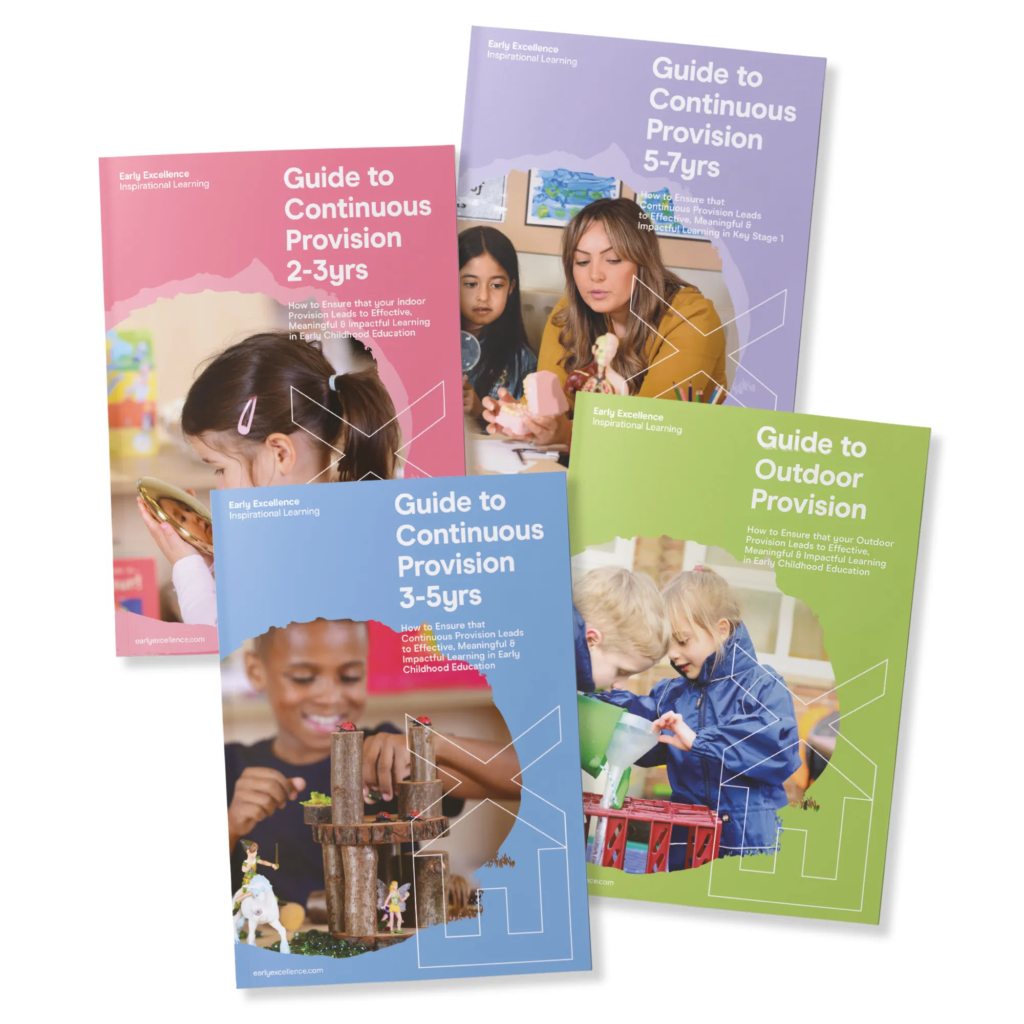
Invest in your professional development with this set of Continuous Provision Guides, packed with practical information to help you plan and resource your learning environments.
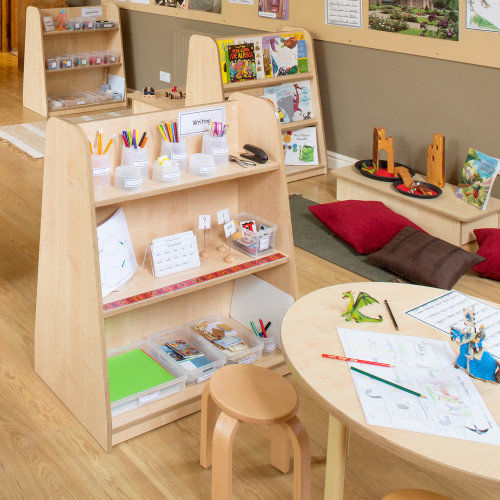
Explore our carefully curated, fully resourced Complete Classrooms to develop an outstanding indoor learning environment for 2-3 years, 3-4 years, 4-5 years and 5-7 years.
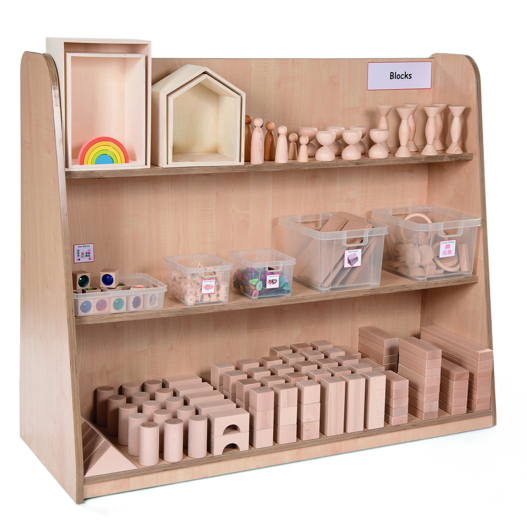
Support open-ended exploration and imaginative block play with our range of open-ended block resources for both Early Years and Key Stage One classrooms.
- Image Source: https://montessori-ami.org/resource-library/facts/biography-maria-montessori ↩︎
- Image Source: https://lab.cccb.org/en/the-contribution-of-the-montessori-method-to-an-uncertain-world/ ↩︎

